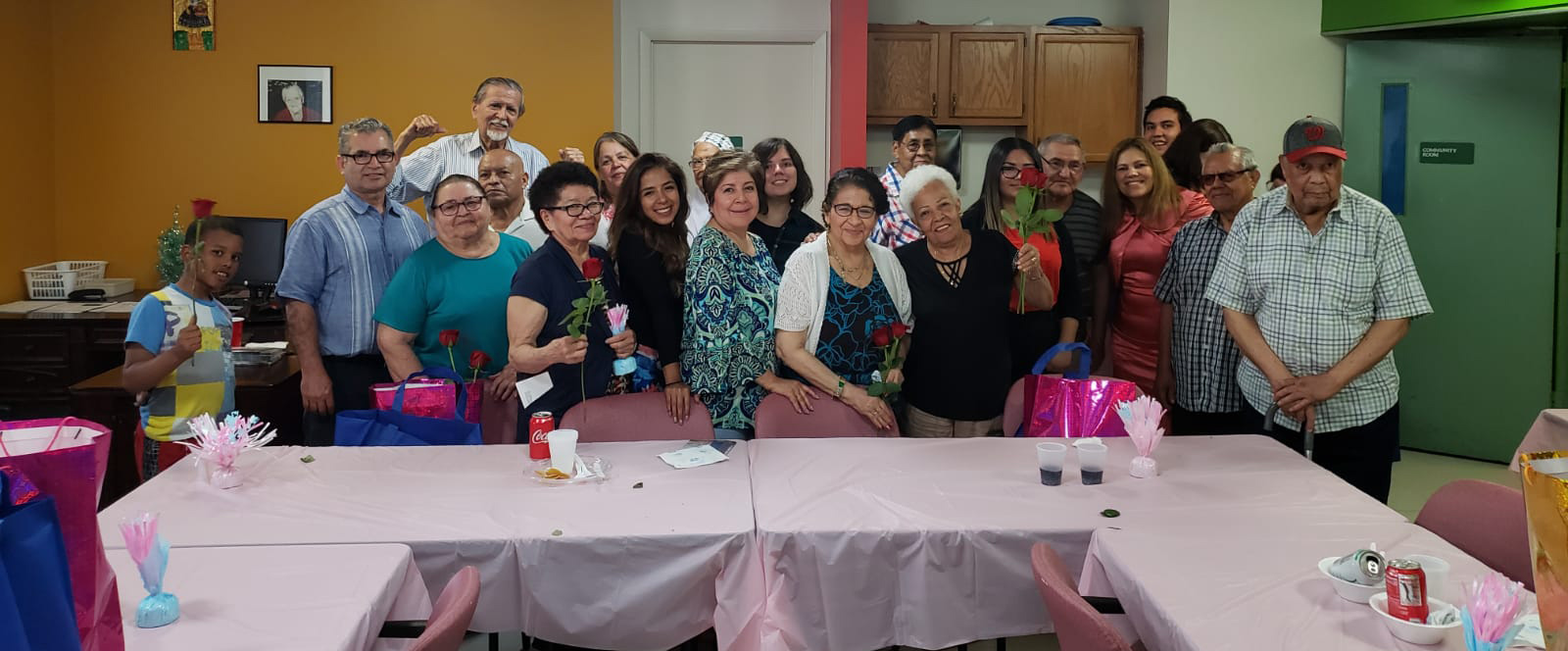Our Focus
In working to empower and bring together the best of local communities to support Hispanic older adults and their families, NHCOA works at the national and local level to implement initiatives, work on public policy, and conduct research that are aligned with the organization’s priorities:
Health
At any age, achieving and maintaining excellent health should be a top priority. Both the healthcare received and the habits established during youth and middle age have profound effects on people’s health as they approach older adulthood. However, Hispanic older adults and caregivers face a number of health challenges, many related to the habits established during their youth and the hardships experienced in adulthood.
In 2018, 20.9% of Hispanics under the age of 65 did not have health insurance. This insurance gap makes preventive healthcare difficult to access. When Hispanics do have access to healthcare, linguistic and cultural gaps between the healthcare provider and the patient or a lack of cultural sensitivity can result in misunderstandings, ineffective communication and mistrust.
Lack of meaningful access to quality healthcare also contributes to poor health outcomes for Hispanic older adults. Hispanic older adults disproportionately suffer from afflictions, such as hypertension, arthritis, heart disease and diabetes. It is estimated that more than 80% have at least one chronic condition.

localized health education and promotion programs
public policy advocacy informed by grassroots input and research
rigorous research, which serves as the basis for both practice and policy
Economic Security
After having actively participated in the workforce, every older American looks forward to spending their golden years in dignity and economic security. Unfortunately, economic insecurity is a devastating condition for many Hispanic older adults, their families, and caregivers.
In 2017, households containing families headed by Hispanic Americans aged 65 and over reported a median income of $40,512, compared to all older households at $61,946. The median personal income for Hispanic older American men was $19,179 and $12,758 for Hispanic older American women. The comparable figures for all older persons were $32,654 for men and $19,180 for women. The poverty rate in 2017 for Hispanic Americans age 65 and over was 17%, which is higher than the rate for all older Americans at 9.2%. It is also projected that the financial hardships created by the COVID-19 pandemic will disproportionately affect Hispanic older adults.
Economic insecurity is especially difficult for older adults who are not physically able to improve their economic situation by re-entering the workforce. Moreover, most older adults experiencing economic insecurity spent their youth and adulthood in the workforce but were not able to save enough money to support their basic needs in older age, in large part due to the fact that many service sector and labor jobs held by Hispanics are low-wage and low/no benefits jobs.
NHCOA is working to improve economic security among Hispanic older adults, their families, and caregivers by advocating for the maintenance and strengthening of Social Security, and other policies that support the financial security of older adults.
Leadership Development and Empowerment:
NHCOA centers its work around the idea of developing leadership through empowerment and civic engagement. Many Hispanics were born in countries or have families in countries that do not have strong democratic traditions. Reminding Latino Americans that they have the right and responsibility to vote is a key component to developing their civic engagement. Culturally and linguistically competent efforts designed to remind eligible Hispanics to register to vote and then go to the polls will help increase their turnout.
NHCOA’s flagship Empowerment and Civic Engagement Training (ECET), is a 2-day training that demystifies the public policy advocacy process. ECET consists of exercises that allow Hispanic older adults to discuss and practice advocacy techniques, as well as learn how to select issues for which to advocate.
ECET has garnered extremely positive reviews and was embraced by participants. One community leader in Dallas explained, “NHCOA is multiplying leadership through us. If these 50 some people trained today can reach at least two people, in one or two weeks, we will double. And, in a few more weeks, they will train others and we will multiply again, and so forth.” Since the ECET program started, NHCOA has training more than 1,500 grassroots and community leaders across the country.
The Hispanic older adults NHCOA encounters during the ECET trainings are eager to work for solutions to their problems. Often, they express how important it is for Hispanic communities to work together for common goals.
Housing:
Adequate housing is fundamental to health and quality of life. Moreover, housing costs are generally the highest expense in a household budget. Fluctuations in rent or mortgage can put families in economically precarious situations.
This is especially true for older adults living on a fixed budget without options to increase their income. In 2019, 47.5% of Hispanics owned their own homes. Homeownership rates increase with age. In 2019, Hispanics between the ages of 66 and 70 had the largest homeownership rate of any other group at 65.9%. Hispanics are likely to have strong aspirations for homeownership, driving them to purchase homes at a younger age.
In 2018, 23 US states had a Hispanic homeownership rate of 50% or greater, an increase of 35% from 2017. The five states/territories with the highest rates of Hispanic homeownership in 2019 were: Puerto Rico (67.3%), Wyoming (64.8%), New Mexico (62.8%), Maine (59.5%) and Michigan (57.9%).
While the majority of Hispanic home purchasers financed their homes through conventional financing, Hispanics were still more than twice as likely to use FHA loans compared to their non-Hispanic White counterparts. The disproportionate share of Hispanics in the FHA lending space is concerning, as FHA insured loans can be costlier than conventional financing. This has the capacity to limit lifetime wealth building potential.
The typical profile of a Latino homeowner in 2018 was younger (median age of 40), born in the US (60%), were self-employed, they had higher income than Hispanics overall and bought their homes in higher cost areas. Latinos are also twice as likely to live in multi-generational households than the general population.
But not all housing news is good. U.S. housing is at its least affordable in the last 10 years. Latinos are being displaced from the regions they’ve lived for generations and moving to areas where rents are lower but public transport is insufficient and inaccessible. In 2017, Latinos were twice more likely to live in severely inadequate housing than non-Latinos (2.04% compared to 0.97%). Latinas face some of the highest risks for eviction. The swelling cost of housing and the lack of affordable housing strains Latino families. Latino families need affordable housing options where they live.

NHCOA is committed to alleviating the housing crisis for Hispanic older adults by providing affordable housing at two low-income housing facilities. Located in Garden City, KS and Washington, DC, these facilities provide high-quality, low-income apartments for Hispanic older adults. NHCOA also implements public policy practices to ensure that low-income seniors can afford to age in place, including advocating for affordable housing facilities and homeownership opportunities.
